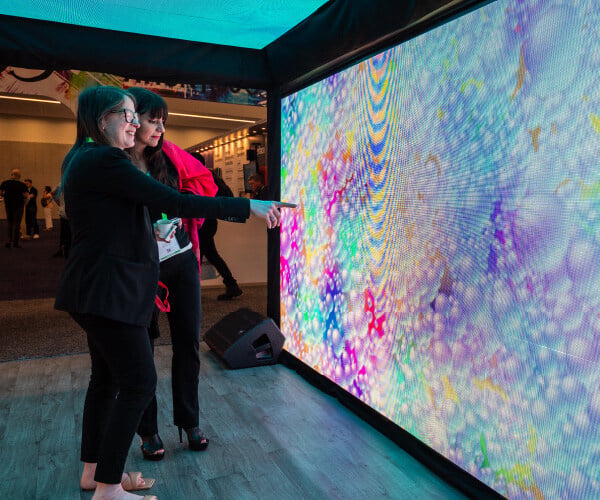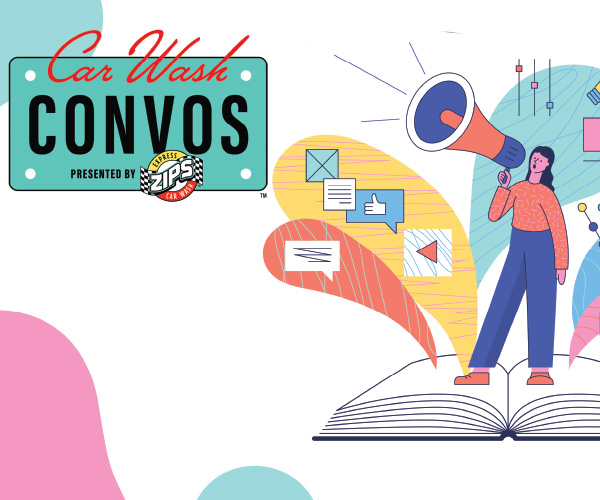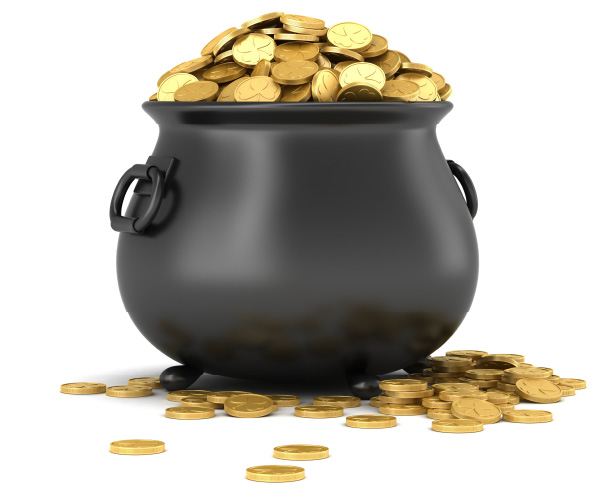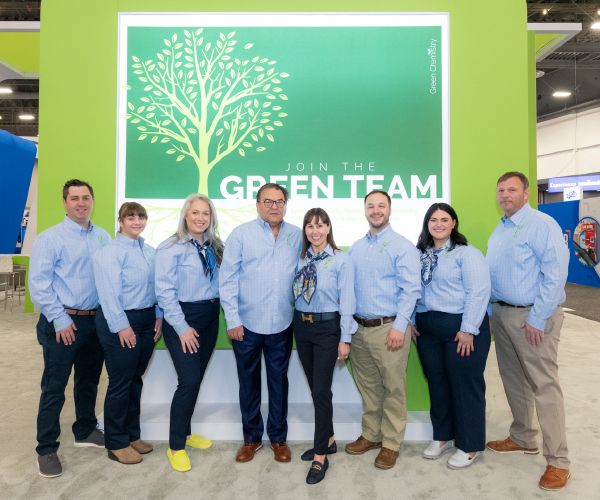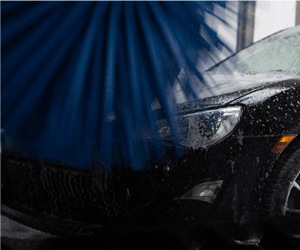
Does your company need a REBRAND?
July 1, 2014
8 minute ReadA company’s brand should be one of its most powerful assets. Your brand is the essence of your company: it’s how customers recognize you and differentiate you from your competitors. A logo is one piece of a brand, but your company’s mission, service promise and reputation are all additional components of a brand. While most successful brands maintain some semblance of their brand throughout the history of the organization, rebrands are not all that uncommon, and are sometimes a necessary change.
A number of the world’s most iconic companies have gone through a rebranding process. The intensity of the rebrand can vary. For some companies, rebranding is a minor tweak to the logo. For others, it can be a complete overhaul of the former brand: a completely new logo, new colors, a new mission statement or even a new company name. The cause of the rebrand is another variable. Rebrands can happen because of mergers or acquisitions, a change in product assortment or to update with the times.
DEFINING YOUR BRAND STRATEGY AND DIRECTION
One iconic American company that rebranded itself was Harley-Davidson.
Today, Harley-Davidson is known for its high-quality products and reliability. In the mid-1980s, however, Harley-Davidson was nearly bankrupt.
The company was almost $100 million in debt. “We weren’t generating a profit because we didn’t have a quality product at that point,” said Richard F. Teerlink, the former CFO turned CEO, in an interview with Business Insider. “We had to improve the quality of our products to be fair to the customer. If we hadn’t improved the reliability of Harley-Davidson products, the company wouldn’t be here today.”
Improving the company’s product helped Harley-Davidson turn things around then. But years later, they faced another struggle: fewer customers. A majority of the brand’s loyal customers were baby boomers and, although the customers were loyal to the brand, their aging bodies made it harder and harder to ride motorcycles. To attract younger customers, the company didn’t sacrifice the quality of their products or change their pricing structure. Instead they helped younger prospective customers reframe their spending habits: Harley-Davidson sales people explained that the monthly payments could be less than a daily coffee from the customers’ favorite coffee chain. This technique, along with some aimed at women and other customer segments, helped change Harley’s performance. According to an article in Forbes magazine, Harley’s 2013 volume growth rate for outreach customers in the U.S. was more than twice the growth rate for core customers. In 2013, Harley was the No. 1 motorcycle seller for women, African Americans, Hispanics, young adults and baby boomers.
How did it do that? The company changed its brand strategy by launching lighter weight (and cheaper) street motorcycles aimed at millennials in the U.S., stabilizing European markets and increasing their shipments overseas — up 7 to 9 percent year-over-year.
MASTERBRANDS AND SUB-BRANDS: PULLING IT ALL TOGETHER
While Harley-Davidson only made some tweaks to its brand, mainly in the form of improving reliability of their products and expanding their target customers, some companies do complete brand overhauls. Case in point: Kellogg’s.
In an interview with Forbes, Kellogg Co. CMO Mark Baynes shared why the company needed to overhaul its brand.
Kellogg Co., the parent company behind iconic brands like Special K, Mini Wheats and Corn Flakes, had been battling through the competitive ready-to-eat cereal category. The cost of ingredients had gone up, forcing many companies to raise prices, while private-label cereal brands were becoming more and more attractive to consumers looking to save money.
To differentiate itself, the company worked to innovate its products and underwent a brand overhaul.
Baynes said it was a great project that was carried out globally across all of their core markets in order to assess the strengths and weaknesses of the brand. The company updated its logo, defined the brand’s core purpose and consolidated 42 company sub-brand websites into one site. They reviewed all aspects of their parent company brand — the masterbrand — and the sub-brands beneath it, and how each sub-brand worked with the masterbrand.
DEFINING A TAGLINE: WHAT IS YOUR BUSINESS ABOUT?
Kellogg wanted to develop their brand purpose. “Breakfast is being redefined today,” Baynes said. “It’s about really understanding: How do we interact with the way people start their day with food? At the heart, we talked about a belief that a better breakfast leads to a better day. But the emotive point that we can leverage is each day really represents a fresh start to realize life’s possibilities, and as a result, we exist to fuel better days and better lives for everyone we touch.”
And Baynes believes that sentiment is captured in their tagline, “Let’s Make Today Great.” Baynes also believes that tagline applies to their Olympics sponsorship: “It’s about possibilities to achieve that day and we talk about a line in our Olympic program which is, “From great starts come great things. Kellogg’s: See you at breakfast.” We believe Kellogg’s is a brand about possibilities and futures.”
This is why developing a tagline is so critical. It gives companies the opportunity to shape the perception of how their services enhance a customer’s life.
Mike Black, co-owner of Valet Car Washes and former president of the International Carwash Association and Canadian Carwash Association, found the tagline to be incredibly important. He felt that the tagline is responsible for setting the tone about the kind of wash customers can expect when they visit one of his locations. “We’ve changed the tagline a few times since the company began in 1991, but the most recent one is ‘Car Lover’s Choice,’” Black said. “People love their cars. We want them to know that we know that, and that we’re going to take care of their car the way they would take care of it.”
USING A BRANDING PARTNER
When the Kellogg Co. began their branding work, they partnered with an agency to develop their strategy and identity system. The agency worked closely on the Kellogg’s brands as well as the Kellogg parent company work, so the agency was familiar with the differences between the two and helped the organization define strategies and identities for both.
Black also found it useful to partner with a professional. “We wanted a more updated and clear logo,” he said. “I wanted to emphasize the words ‘car wash’ in the logo, which hadn’t been done in previous versions. We were fortunate to work with a graphic designer who clearly understood my vision.” After sharing his vision, the designer put together a new logo, and Black loved it. “He nailed it on the first shot!” Black said.
Not only did Black have the logo redesigned, but he made sure to go the extra step in order to protect the brand. “We trademarked and registered our logo this time,” Black said. “I wanted to make sure we were protecting the brand.”
THE POWER OF THE ESTABLISHED BRAND
Organizations with a masterbrand and sub-brands like the Kellogg Company might want to consider Kellogg’s strategy. While the company recognizes the power of their masterbrand and its relationship with consumers, it’s different in the way they execute their power. “We’re certainly not going to take our $1 billion of spend and move it under the masterbrand,” Baynes said. “It’s not going to be masterbrand-driven advertising. But there are occasions, such as the Olympics or occasions such as certain growth platforms or communications platforms, when you want to encompass a certain number of those sub-brands and where the masterbrand approach provides an effective way of doing that.”
The sub-brands would tie together with the overarching identity system defined during the rebrand. Baynes said that understanding the power of the masterbrand — what set them apart from the hundreds of cereal company competitors of the past — was critical. “It’s getting back to that tremendous heritage of 100 years of innovation in this category, high quality, nutrition, trust, how we take care of and exist in our communities,” Baynes said. “These are far more effective messages and a way to reinvest and build equity and continue to build equity in our masterbrand.”
For some organizations, partnering with an existing, established brand makes the most sense. Valet Car Washes offers independent operators the opportunity to participate in their licensing system, giving them the chance to reap the benefits of a brand that already has earned credibility in the industry while still maintaining independence.
“In the car wash business, especially if you’re new, it’s a very long and expensive learning curve,” Black said. “We’re able to use our years of experience to help an operator shorten that learning curve and save them a lot of money. We’re able to provide a lot of things that take up a lot of his time — like menus, pricing, human resources — so he can concentrate on how to run the business.”
For Valet Car Wash’s licensing system, operators are able to use as little or as much as they want. “If he wants his own menu and prices, as long as he’s consistent with branding and logo, we have no problem with that,” Black said.
Black also said that the licensing program is useful for existing locations. “If the location is tired and needs to be kickstarted again, we’re able to come in and give him a one-stop shop,” Black said.
Valet Car Wash has witnessed firsthand how impactful a rebrand can be.
“About a year and a half ago, we rebranded one of our own sites that was about 25 years old,” Black said. “We saw a more than 50 percent increase in car count.”
What made the difference? “We realized we didn’t have a single sign on the building that said car wash!” Black said. “The interesting thing is that we sell gas at this location. We did customer surveys, and one question asked respondents if they were aware that we had a full-service wash at the location. More than half didn’t know there was a car wash — a car wash that was literally 200 feet from the pumps.”
Now since the rebranding, the car wash is so visible that the impact is strong — customers can’t miss it.
“It just goes to show that current operators sometimes can’t see the forest through the trees,” Black advised. “They’re so used to looking at their building and can’t take into consideration what the customer is or isn’t seeing.”
For the existing locations whose sites have declined in quality, Black said it’s hard for operators to turn that around on their own. “A rebrand is like a rebirth — people think it’s a whole new operation, giving the operator a chance to start fresh.”
Kellogg’s Baynes said that in the end, the relationship their customers have with the brand is the most vital thing to maintain. “We have an advantage when we launch brands, we have an advantage because the Kellogg brand provides a source for authority and a source of trust,” Baynes said. “So it is about making sure the very foundation of our business, the very source of our reputation, is continually strengthened and invested behind for the future prosperity of our business.”


